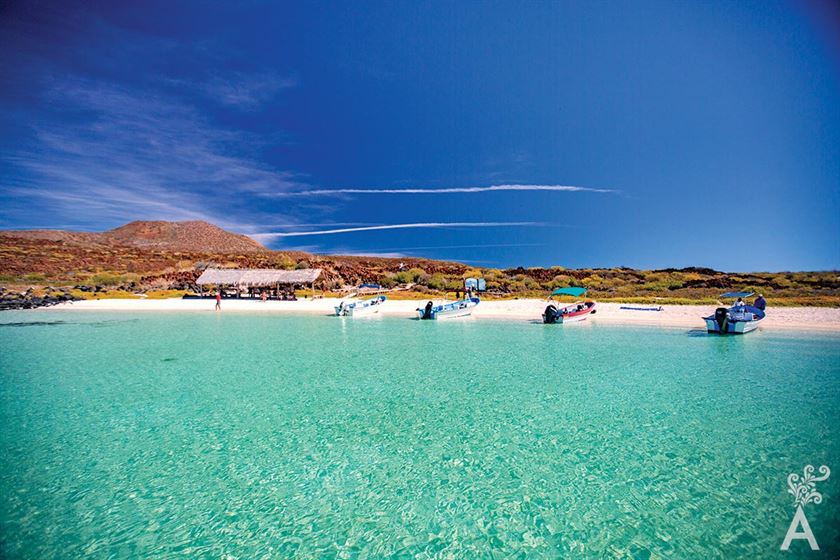Tourism began in Loreto years ago. In 1946, Juan Verdugo Garayzar and Blanca opened their home to wedding guests. The house went on to make history in Loreto. It welcomed not only the first tourists, but doctors, teachers, priests, travelers, agents, carriers, intellectuals and businessmen.
The kitchen of the house was superb, and meals were always accompanied by a glass of wine or brandy Garayzar, known by guests as tiger’s milk. Both products were made of grapes distilled at the family owned Rancho El Zacatal.
The guest house of Doña Blanca stayed in business until the 1980s. In the end, it was run by the daughter of the couple, the unforgettable Garayzar Verdugo. One of the visitors, Edward Tabor, came to Loreto on his private plane in the late 1940s. He was invited to dine and fell so in love with the place that in 1950, the American visionary established the first hotel in Loreto exclusively for amateur sport fishing in Baja California Sur. It was called the Hotel Tabor or the Flying Sportsmen’s Lodge.
The hotel is in a dense palm grove in the Zaragoza Colony, facing the sea. It opened with 15 rooms, a pool, restaurant, bar, game room with pool and ping-pong tables and a sport fishing fleet. Tabor traveled twice a week to Mexicali to carry guests on his plane that he piloted himself. It should be noted that Tabor’s hotel is still there and now operates under the name of Villas de Loreto.
[two_first]Loreto was the pioneer that ignited tourism in Baja California Sur. After the Flying Sportsmen´s Lodge, Abelardo Rodriguez opened the Las Cruces Hotel in La Paz in 1951. In 1953, the Rancho Buena Vista Lodge opened in East Cape. The Hacienda Mulege Hotel opened in 1955 and, in 1956, the second property of Abelardo Rodriguez, was Palmilla in San Jose del Cabo opened for business. It was just the beginning.
[/two_first][two_second]

[/two_second]
The Hotel Tabor had its own airstrip. The town also had an airstrip and flights were scheduled by the Trans Mar de Cortes Company that initially connected Guaymas and La Paz. Ships plying the coasts of the Sea of Cortez regularly anchored at Loreto bringing necessary goods from La Paz, Santa Rosalia and Guaymas.
In 1962, the Oasis Hotel opened with the marriage of Benziger-Davis. The construction of this hotel marked an important period when tourists arriving by private planes turned Loreto into a favorite destination. Those were good times for sport fishing. Dozens of planes occupied all the parking spaces and when there was no more room, they overflowed into the street. Private plane tourism was considered economic development of the highest order. As a result, Loreto’s main occupation became clear – tourism.
In 1967, the Hotel Salvatierra opened. It was followed in 1970 by the Mission Hotel built by the Arias-Salorio family, this hotel was sold, remodeled and opened again in 2009. In 1971, the Playas de Loreto hotel opened its doors. It is now called La Pinta.
The Loreto International Airport was established in 1973. Aeromexico absorbed Trans Mar de Cortes and the line served Loreto until 1988. By the time the Presidente Hotel opened, Loreto was served by more than 17 flights a week. Destinations in Mexico, including Guadalajara and Culiacan, and Tucson and Phoenix in the U.S. were connected to Loreto.
With the construction of the Transpeninsular Highway in the 1970s, Loreto was connected to Cabo San Lucas to the south and San Diego to the north. In 1980, FONATUR opened the Presidente Nopolo Hotel with 250 rooms.








